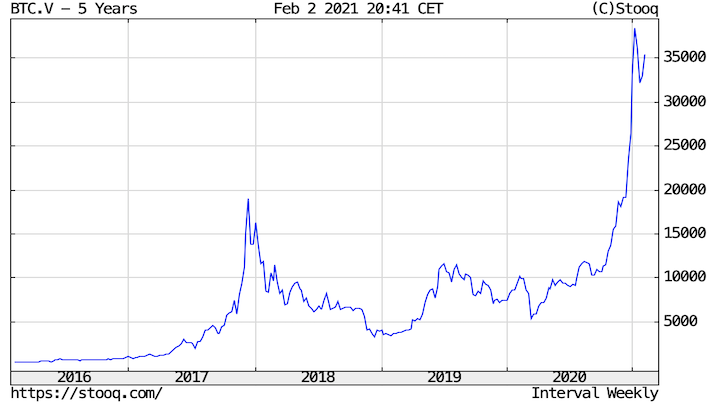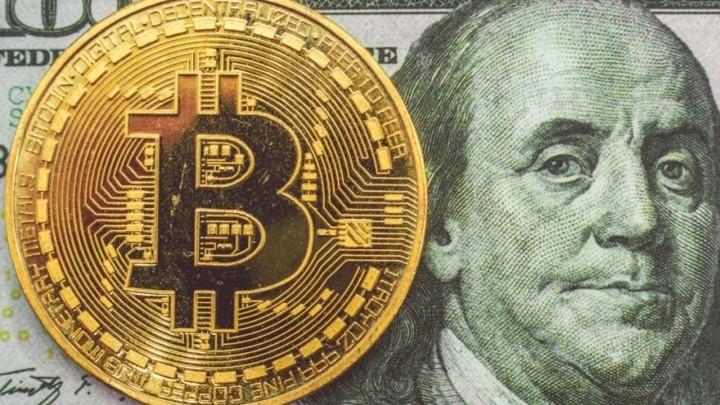Bitcoin Regains Popularity and Sets Historic Record
January turned out to be the month when more than 22.3 million unique addresses on the Bitcoin network were used to receive or send the most important cryptocurrency. It's a new record.

The beginning of the current year started off on a high note in the world of cryptocurrencies, as according to information published by Glassnode, the past January stood out for the highest activity in Bitcoin's network since December 2017, when the number of active addresses reached more than 21.6 million. This time, the number exceeded 22.3 million, and thus reached its new all-time peak. Moreover, January 7 also set a record for the number of new wallets that appeared in Bitcoin's network, as more than 682,000 were created on that single day.
At the same time, Glassnode points out that the record number does not take into account packet transfers that take place between entities that control a larger number of addresses, that is, such as exchanges or trade bodies. Moreover, in order to calculate the final result, only those successful transactions were taken into account.
An address, or in other words a public key, is a kind of equivalent to an account number to which we can send or receive a given cryptocurrency, in this case, Bitcoin. Same as three years ago, we can see the growing number of active wallets with the simultaneous appreciation in the Bitcoin price, which in the first half of last month broke through another barrier, temporarily reaching the value of $41,940. This phenomenon is fully understandable given the fact that with asset's appreciation, its popularity grows, primarily among retail investors.

Some people consider the halving that took place on May 11, 2020, reducing the reward received for performing calculations leading to the creation of the next block of the cryptocurrency network, as the reason for Bitcoin's dynamic growth. After the third event of this kind, the said reward was reduced from 12.5 BTC to 6.25 BTC. The first halving took place more than eight years ago when the value dropped from 50 BTC to 25 BTC.
Nevertheless, it should not be forgotten that strong growths are currently not only the domain of the cryptocurrency market but almost all financial markets. This may seem unnatural given the fact that the previous year was marked by the pandemic and the closure of economies around the world, but the current condition of investment assets is mainly due to the introduction of extremely loose monetary and fiscal policies in almost every economically developed corner of the planet. The largest central banks "print" gigantic amounts of fiat money in order to buy government and corporate bonds (QE), and thus indirectly causing inflation in the prices of specific assets, such as stocks, raw materials, or just cryptocurrencies. Many people initially "fled" into Bitcoin to protect themselves from this kind of activity, but as the price rose, so did those hoping to make a quick buck or experiencing the so-called FOMO (Fear of Missing Out).

Predicting future price movements of investment assets, let alone speculative ones, is extremely difficult. Nevertheless, some analysts warn that even if the bull market in cryptocurrencies were to continue, their above-average volatility should be reckoned with, as well as the risk of potential corrections.
- Glassnode - official homepage
- Bitcoin Will Reach the Million Dollar Mark?
- Dogecoin Shoots for the Moon Thanks to Elon Musk and Reddit
- Bold attempt to save the game failed. Remedy announced a „profit warning,” essentially admitting defeat
- What's killing new games? Ubisoft has a simple answer: „Players are playing less, but longer”
- Problems with X (formerly Twitter) and ChatGPT (unlock challenges) continue as Cloudflare Global Network is experiencing issues
0
Latest News
- „A lot has become lost in translation.” Swen Vincke suggests that the scandal surrounding Divinity is a big misunderstanding
- Stuck in development limbo for years, ARK 2 is now planned for 2028
- Few people know about it, but it's an RPG mixing Dark Souls and NieR that has received excellent reviews on Steam, and its first DLC will be released soon
- AI „won't make The Witcher 5,” but CD Projekt Red doesn't despise it. Artificial intelligence isn't responsible for massive layoffs in the game industry
- This is expected to be the biggest year in the company's history. Blizzard prepares an offensive that will overshadow previous years

